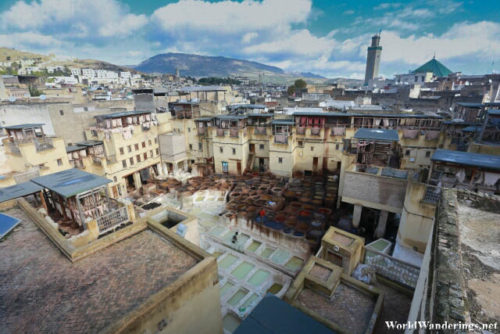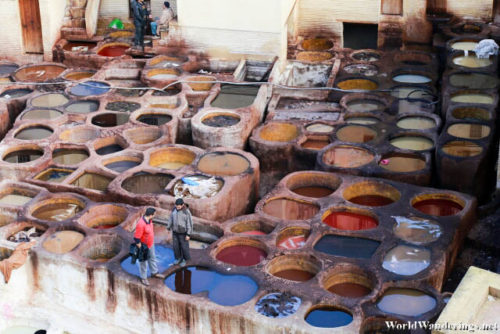The staff of the shop I picked at the Chouara Tannery was talking about the tannery and the methods which they use to process the hides. The process has remained essentially unchanged over the centuries. The tannery was established in the eleventh century and it is the largest of the three tanneries in the city. The shop staff was doing his bit about the tannery but I wasn’t really that interested. For one thing, their spot isn’t very nice. You could see the vats of liquid from their roof deck but the angle isn’t very nice. As I look around, I could see other tourists also on other roof decks being toured by their the own shop staff. I knew I would have to give a little something for the tour as well a the guide to the tannery itself. I gave him some money and I went back down. When I said that I wasn’t interested in buying anything it was as if I don’t exist and he just left me alone. I wasn’t offended by this and actually expect it.
I walked around some more and then went up another shop with my own guide as well. I managed to find one with a much better view of the tannery, coupled with better lighting from the sun. You can clearly see the white liquids and the colored liquids which they use to process the hides. The white liquids, soften up the hides and make it easier for the hides to take in the color. The colored liquids are dyes of various colors for whatever color you want your bag to be. These hides are then sold to other artisans who make jackets or bags out of the skins and they sell them in the shops below. It is quite amazing to see such a manual process still being used after all these centuries. I guess it is this dedication to the process which makes these leather goods famous around the world.
[xmlgm {http://www.worldwanderings.net/kml/ChouaraTannery.kmz} zoom=19]

